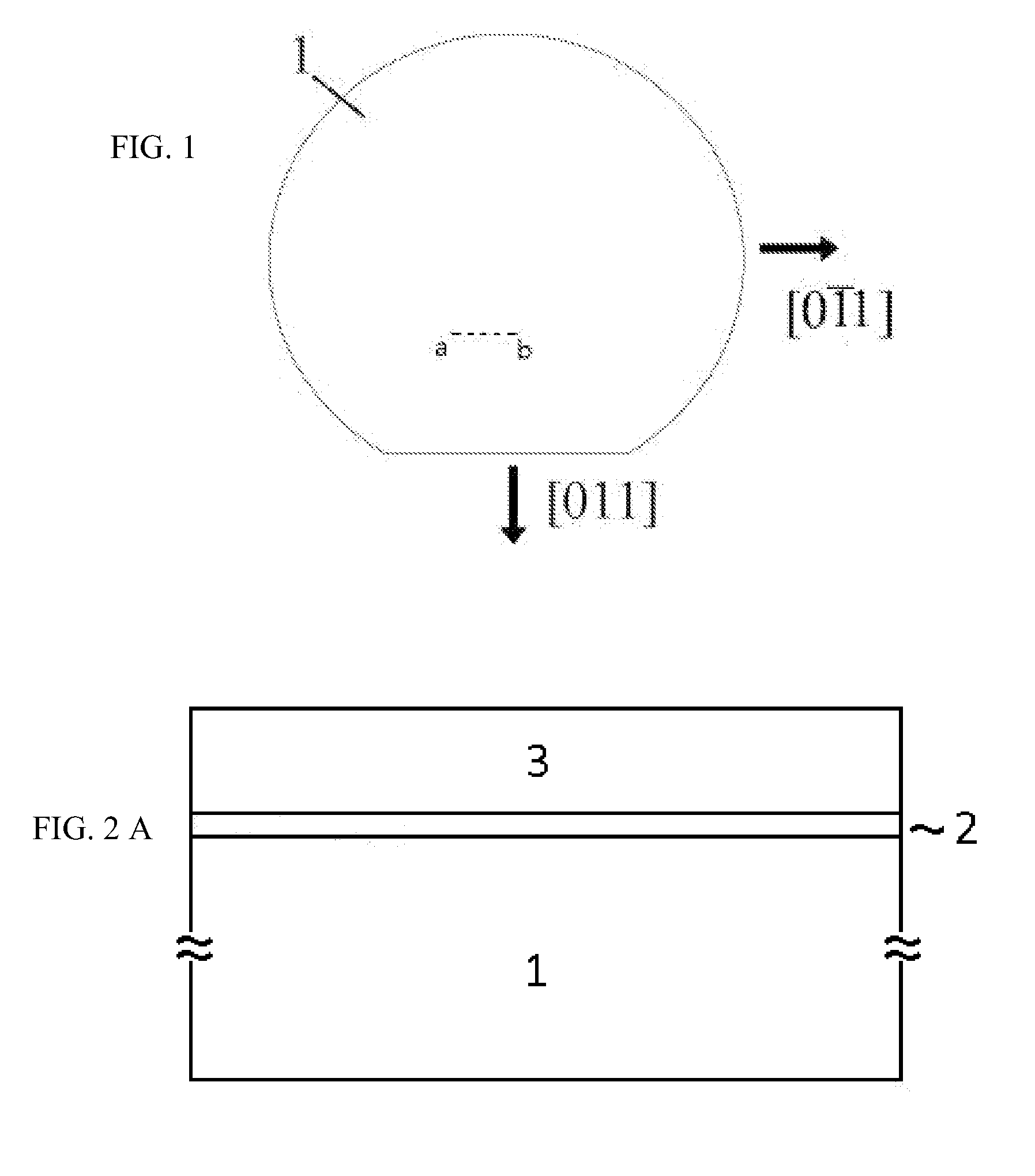Highly integrable edge emitting active optical device and a process for manufacture of the same
a technology of active optical devices and manufacturing processes, applied in the field of semiconductors, can solve the problems of significant stress on the semiconductor, inefficient light-emitting materials of silicon, and the development of silicon active optical devices such as lasers and optical amplifiers, and achieve the effect of high temperature operation and lifetime of the devi
- Summary
- Abstract
- Description
- Claims
- Application Information
AI Technical Summary
Benefits of technology
Problems solved by technology
Method used
Image
Examples
Embodiment Construction
[0047]In the following, an embodiment of the semiconductor edge emitting laser platelet process in accordance with the present invention will be explained with reference to the accompanying figures. The description herein refers to the use of Indium Phosphide as the material from which the laser is manufactured. This technology applies equally well to other materials, such as Gallium Arsenide, that have a similar crystal structure.
[0048]FIG. 1 is a view of the (100)-oriented InP wafer 1 (which is hundreds of microns thick) upon which has been grown an edge emitting laser epitaxial structure. The wafer crystal orientation is chosen since the cleavage planes lie along the (011) and (011) planes, or in other words, the orthogonal directions on a (100)-oriented wafer. FIG. 2A is a view of the cross section of the wafer shown in FIG. 1 taken along the line a-b. Between the semiconductor laser layer structure 3 and the InP substrate, there is a thin (i.e., a few hundred to several hundred...
PUM
 Login to View More
Login to View More Abstract
Description
Claims
Application Information
 Login to View More
Login to View More - R&D
- Intellectual Property
- Life Sciences
- Materials
- Tech Scout
- Unparalleled Data Quality
- Higher Quality Content
- 60% Fewer Hallucinations
Browse by: Latest US Patents, China's latest patents, Technical Efficacy Thesaurus, Application Domain, Technology Topic, Popular Technical Reports.
© 2025 PatSnap. All rights reserved.Legal|Privacy policy|Modern Slavery Act Transparency Statement|Sitemap|About US| Contact US: help@patsnap.com



